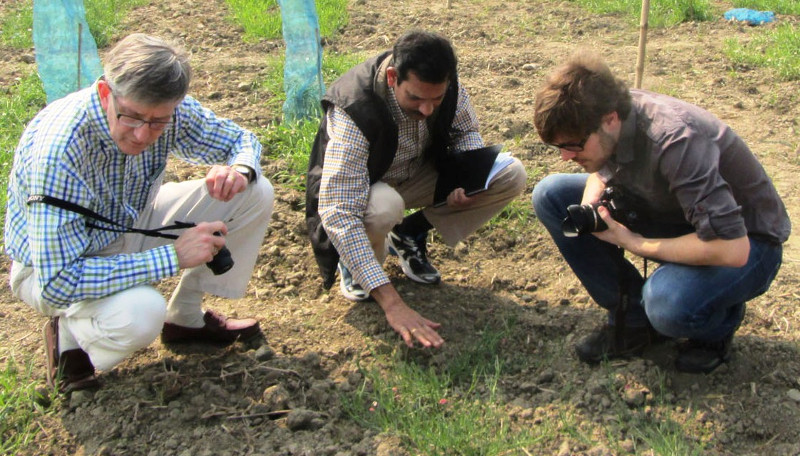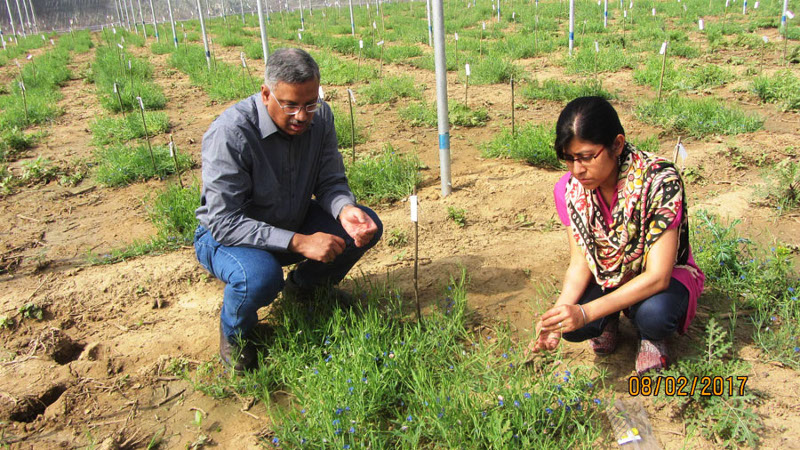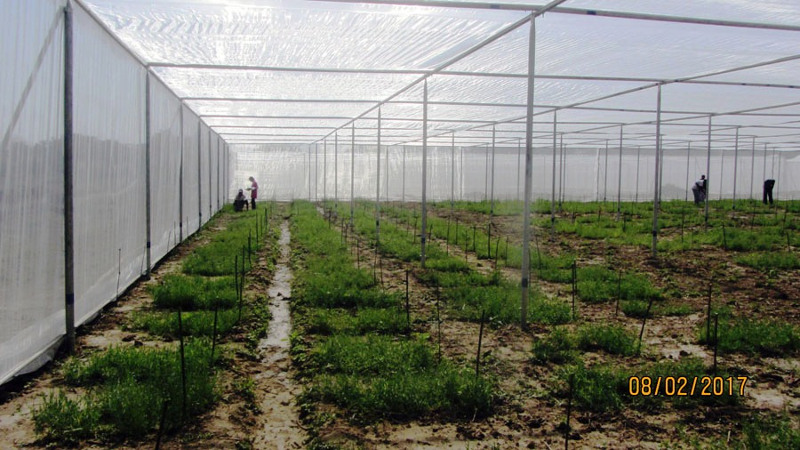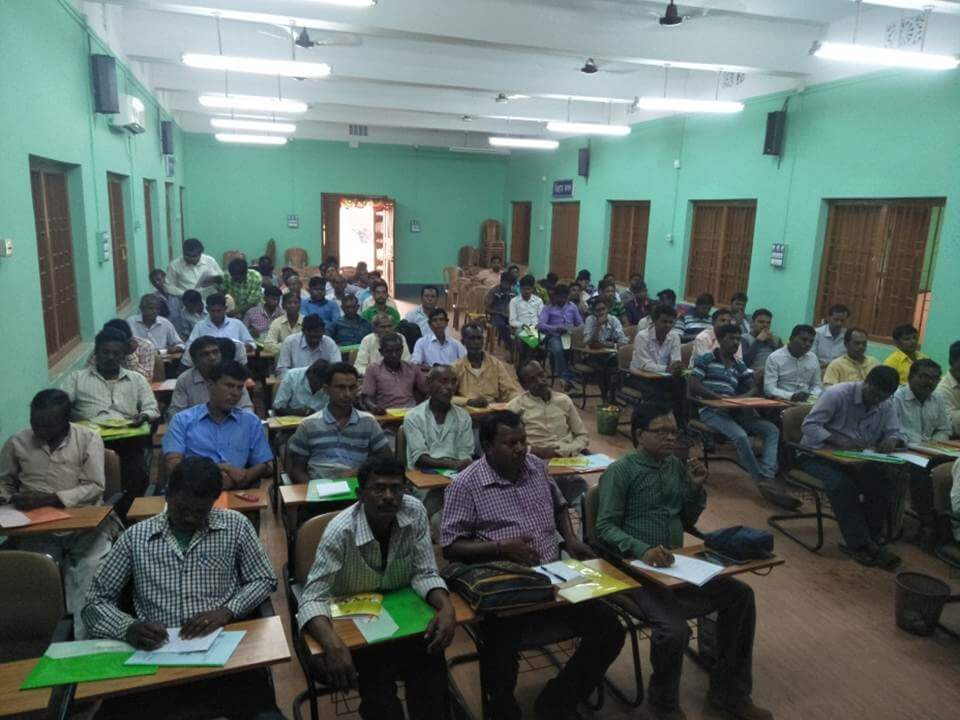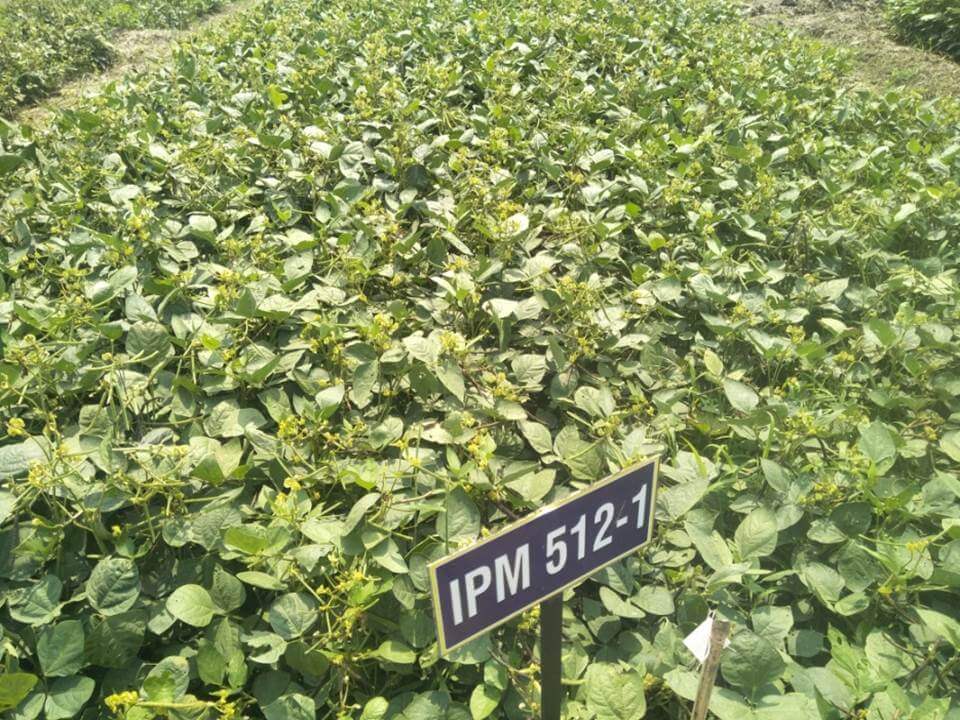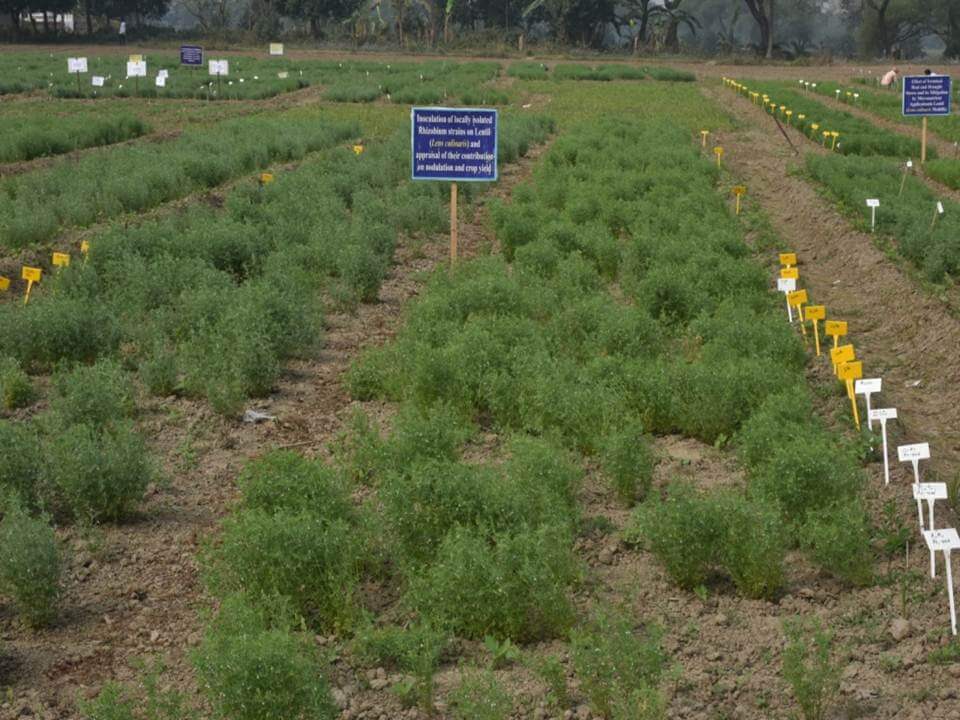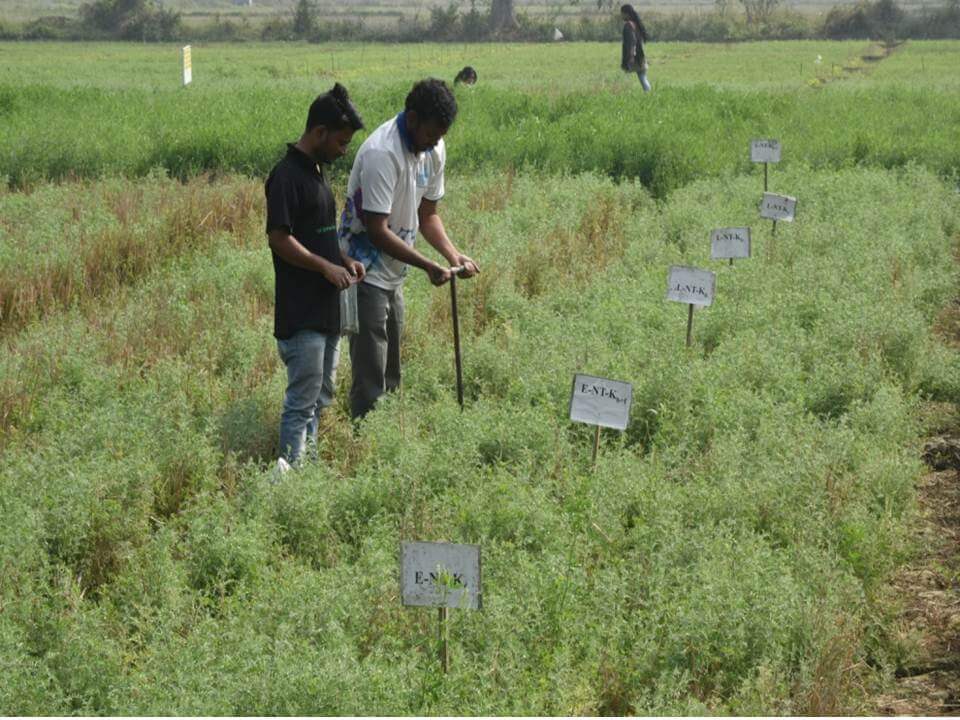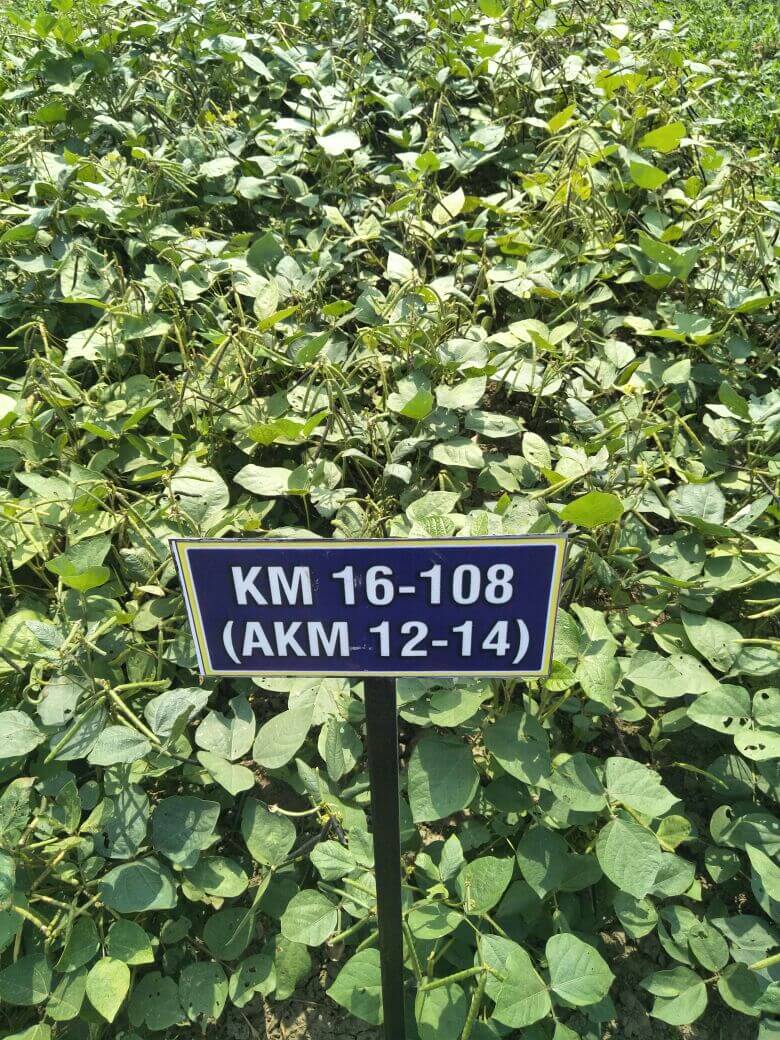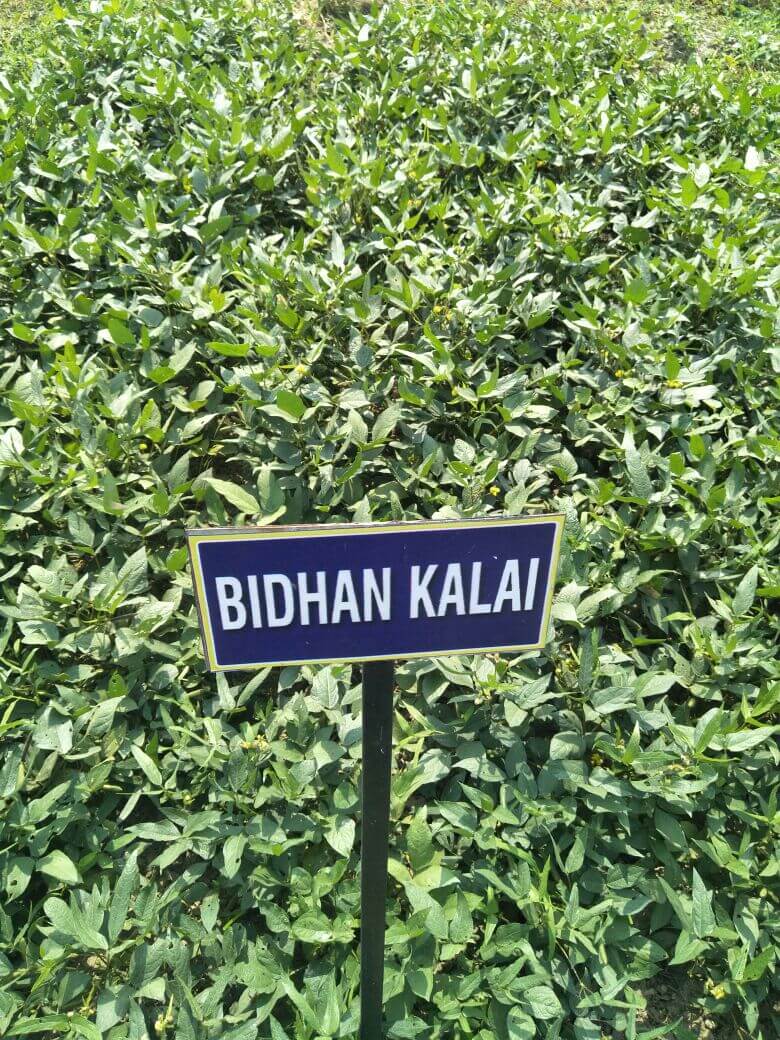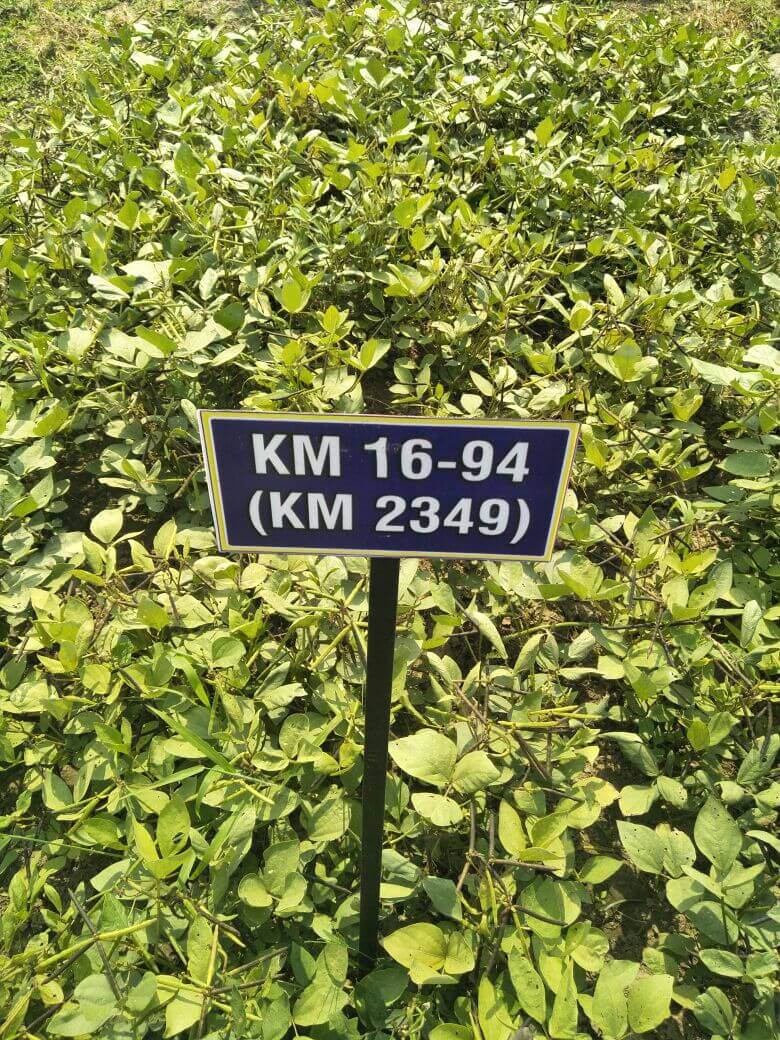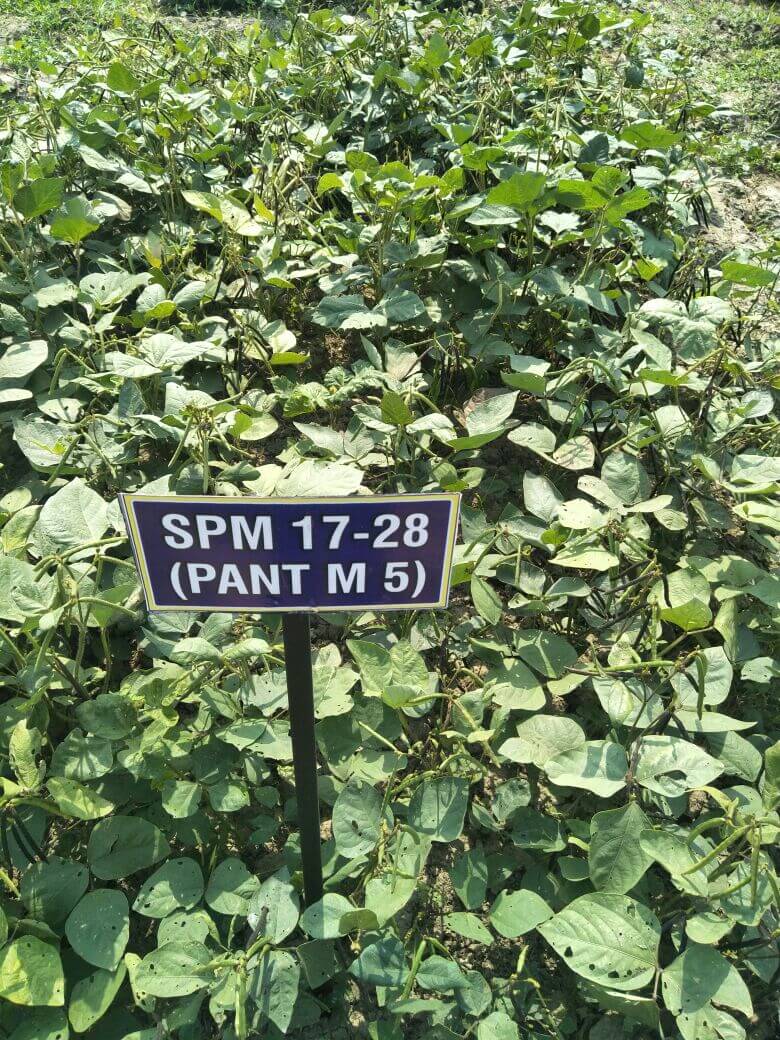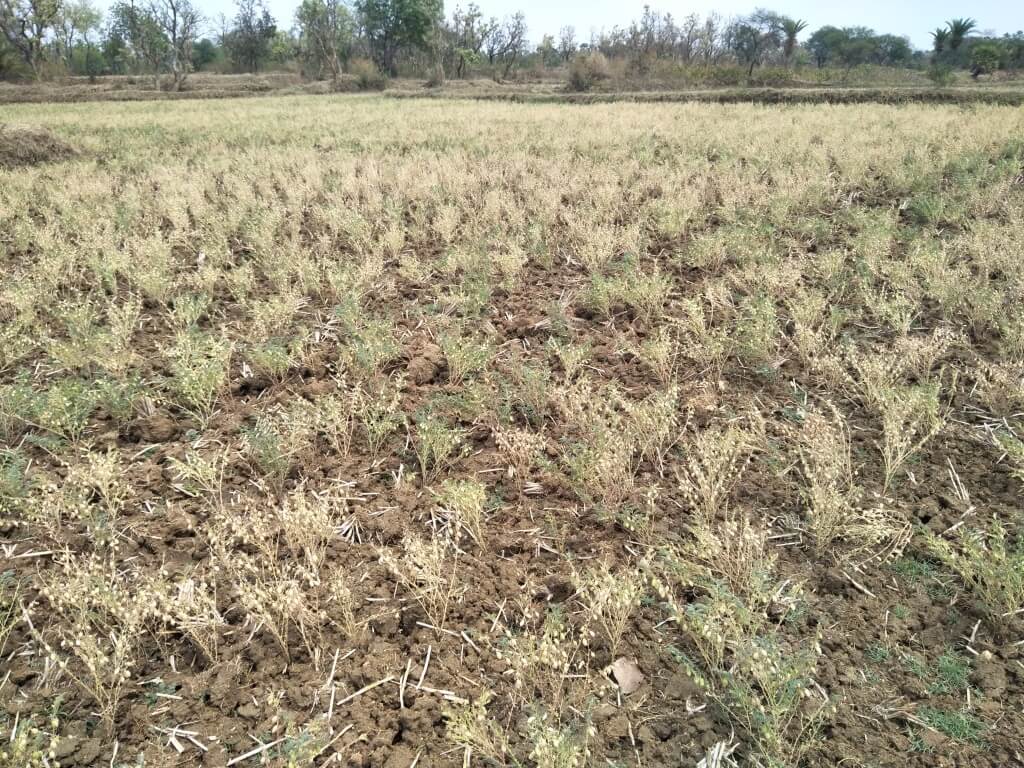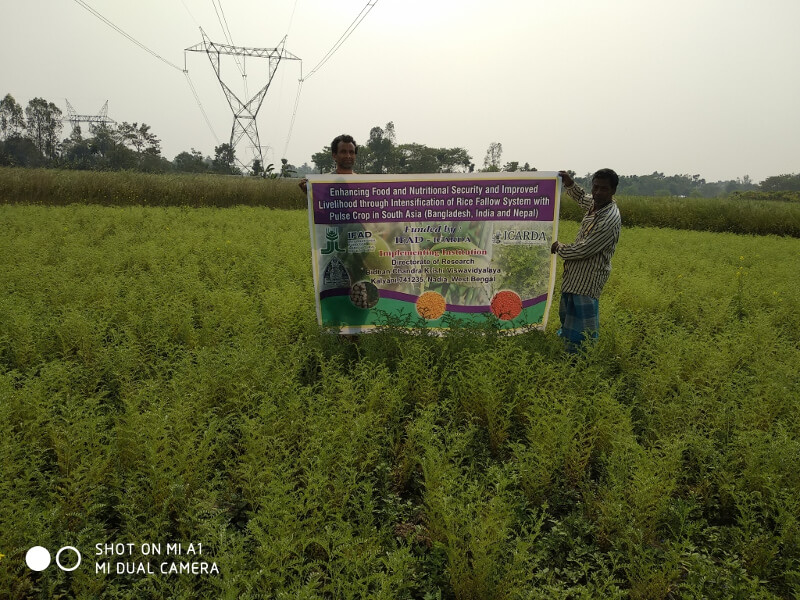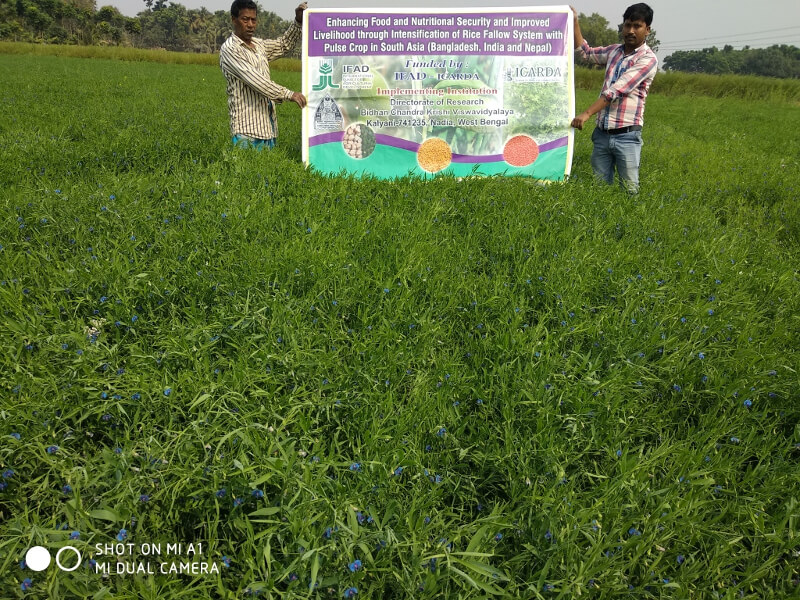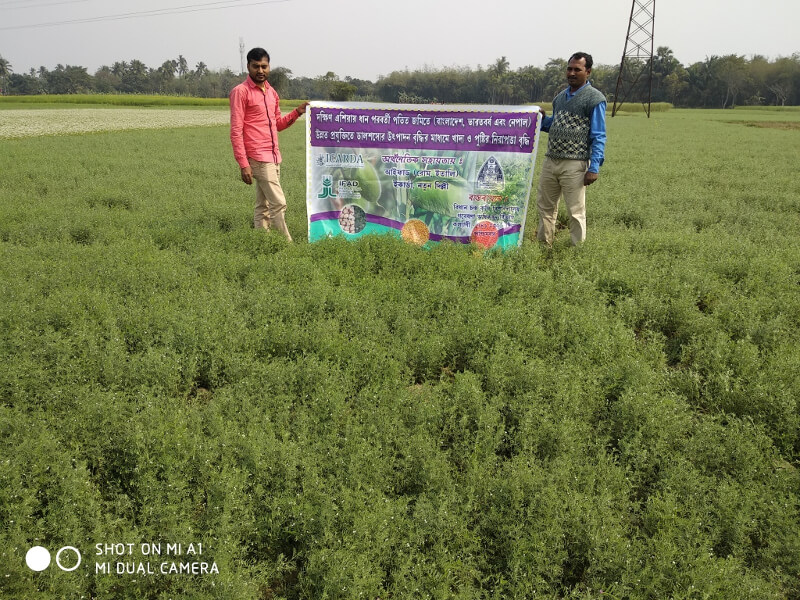ICARDA
These two projects with OCPF – ICARDA and IFAD – ICARDA collaboration are undergoing in our university from year 2012 and 2016 onwards respectively and are being guided continually by Dr. Rajib Nath (Professor, Dept. of Agronomy, BCKV) since then. These projects started with the objectives of utilizing the existing rice fallows under West Bengal condition with different improved varieties of pulses like, Lentil (PL6, HUL57, Moitri, NDL1, Subrata and PL406), Chickpea (Anuradha), Lathyrus (Ratan) and Mungbean (Samrat, Sukumar, Pant Mung 5) in farmers’ field of 5 major districts – North & South 24 Pgns, Nadia, Bankura and Purulia. Improved packages of practices through farmers’ participatory demonstration are being conducted every year in number of villages of these districts that has led to increased cropping intensity of these areas. Besides, they are also being benefitted with enhanced income, improved soil health and crop land sustainability.
The Village-based seed production system matching with the socio-economic profiles of the farmers in the project area are also being implemented for them. Farmers’ of those areas are also found to become actively involved in variety selection and demonstration as well as seed production and marketing for rapid spread and adoption of the improved varieties and production technologies. These projects have also provided them the opportunity to get training on quality seed production, seed storage, milling. After five years of the project period, the model seed system has strengthened and up- scaled not only in the project area but also out-scaled in the adjoining villages which have resulted in faster spread of the improved varieties. These two project s have established good liaison with informal and formal seed sectors involving national and state seed corporation, Government co-operatives, local self-help groups and NGOs of the project area. To name a few, Panpur Krishi Samabai Samiti (PKSS) have already raised 11 tons of seed from cultivators’ field at a reasonable price. Besides, trainings related to varieties of value added products (Lentil-mango bar, Dried dal dumplings and Chana sattu) using these pulses have been imparted to women farmers from time to time.
Under the OCPF - ICARDA project (2012 to 2017) 80 villages of 30 blocks covering 380 hectares and 2424 farmers is monitored by a team of scientists of different disciplines. Tis project boasts of producing 832 tonnes quality lentil seed during its operational period from farmers’ field. Farmers’ were provided with required fertilizers (Urea, SSP and MOP). In order to boost up the production specified Rhizobium cultures are given to the farmers. Another input viz. Boron is supplied to them from the project end. Moreover, 10 Farmers’ Cooperatives and 21 SKUS were involved with the project work during that period. The average yield of lentil reached 1025 kg /ha with total grosses of Rs. 1.37 cr. and net returns worth Rs.79 lakh. During the project period, a total of 60 women voluntarily participated in project activities. 15 awareness programs, 20 farmers’ trainings held, 30 group discussions and 40 field visits were conducted during the project period. Consorted efforts of the team members of the project have boost up the yield in cluster areas to 1200 kg/ha which is significantly higher than the state average. Highest yield to the scale of 1800 kg/ha has been recorded in farmers’ field, thus leaving much scope as well as challenges in near future. From the project survey, done each year in different villages under the project area, the success stories of about 6 farmers whose annual income from crop cultivation has hiked after they adopted the practice of growing pulses was revealed. Almost 84 backup researches related to the project subject matter was conducted in university (BCKV) farm during the project period.
The IFAD - ICARDA project initiated lately from year 2016 onwards at BCKV. During the previous year, the project activities were performed in 109 villages of 18 blocks with involvement of 1000 farmers. The total area covered including the 3 crops (lentil, lathyrus and chickpea) was 150 ha. Report of year 2016-17 revealed that a produce of 433 tonnes of lentil, 364 tonnes of Lathyrus and 200 tonnes of Chickpea was achieved from farmers’ field. In the present year (2017–18), one more crop, Mungbean is also incorporated for farmers’ demonstration along with the rest 3 pulses. The work plan of the current year shows that the project work will be carried out in 15 blocks of 5 districts in area of 358 ha farmers’ field.
Pulse Production Technology:
Lentil: In addition to normal fertilizer dose (20 kg N, 40 kg P2O5, 40 kg K2O ha-1 ) 2% foliar spray of Urea at 45 DAS and 65 DAS in Lentil showed 10-12% increase in yield both in relay crop as well as sole crop as per trial of consecutive four years.
Better performing varieties in the farmer’s field of Alluvial zone are NDL1, WBL77, Subrata, PL6, HUL57 (1100-1400kg/ha). WBL77 also performed better than other varieties in Red and Lateritic tract of West Bengal (600-800kg/ha).
Varieties like WBL77 and Subrata performed well as a relay crop after the rice cultivar MTU7029 (Swarna) with seed rate of 50kg/ha where as NDL1 performed best after Shatabdi (IET4076) at the rate of 60kg/ha.
Mungbean: Variety, Meha (IPM99-125) showed more than 10-20% yield (1423-1596kg/ha) advantage over popular cultivars, Sukumar (1320kg/ha) and Samrat (1064kg/ha) and B1 (1021kg/ha) in experimental plot when sown on the window of March10-21. On the other hand, Pusa9531 (1380kg/ha) and Pant Mung2 (1183kg/ha) performed well under the Kharif season.(sowing date 6th August to 3rd Week of August).
Black gram Variety, Pant U31 performed (1585kg/ha) better than Sarada (1422kg/ha) and Sulata (1320kg/ha) in Spring (sowing date March-17th) in the experimental plot of Kalyani.
Lathyrus: Ratan (Biol212), contains less than 1% ODAP, performed better than Nirmal in coastal as well as red& Lateritic tract of West Bengal
Pulse Protection Technology:
Table 1. Captan 70 % + Hexaconazole 5% WP @ 1g/litre of water for the control of Stemphylium blight in Lentil.
| Treatment | PDI (% Disease Index) | Decrease of disease Severity (%) | Test weight (g) | Yield (kg/ha) | |
|---|---|---|---|---|---|
| Captan 70 % + Hexaconazole 5% WP @ 1g/litre of water | 28.9 | (32.5) | 63.89 | 1.68 | 1401.67 |
| No fungicide | 80.0 | (63.4) | 0.00 | 1.59 | 1055.00 |
Least population of mitewas recorded in the mungbean cultivar Pusa Vishal and the maximum population was observed in the cultivar IPM 99-125.
Quizalofop-P-ethyl 50 g.ai/ha at 30 DAS (1947 kg/ha) and Imazathapyr 37.5g a.i./ha (1903 kg/ha) were effective post emergence herbicide in lentil when sown on 12th November.
Fenoxapropo-p-ethyl @ 50 g.a.i./ha (965 kg/ha) and Vellore 32 (Pendimethalin 30 EC + Imazathapyr 2EC) @ 1 kg ai/ha (954 kg/ha) were the effective herbicides in Mungbean under kharif season.
Pulse Improvement Technology:
Two extra-early (100days) lines of lentil, L111-7 (Bidhan Lentil 14, 1766kg/ha) and L111-8 (Bidhan Lentil 15, 1701kg/ha) have given entry to AICRP system and performed very well in Pantnagar ( 1389 Kg/ha), Ludhiana ( 1294 Kg /ha), Gurdaspur ( 2284 Kg/ha) IARI( 1135 Kg/ha), Ludhiana( 1901 Kg/ha), Gurdaspur( 1460 Kg/ha) Varanasi ( 1682Kg/ha) and Berhampur ( 1748 Kg/ ha). These are the shortest duration genotypes among all the released varieties. Although they are not promoted to IVT due to lesser national average, they can be recommended for state release as winter span is not so prolonged here.RKL-607-01, L4710 are two extra early lines (90days) with better yield (1300-1500kg/ha) are further screened suitable for short season environment of West Bengal. They will also be given entry into national trial for the coming year.
Table 2. Newly developed extra early lentil lines with yield.
| Genotypes | Days to maturity | 100 seeds weight (g) | Yield (Kg/ha) |
|---|---|---|---|
| Bidhan Lentil 15 | 111 | 1.9 | 1466 |
| Bidhan Lentil 15 | 103 | 2.5 | 1401 |
| L 4710 | 85 | 2.03 | 1482 |
| RKL 607-01 | 96 | 2.74 | 1234 |
| PL 406 (Check) | 109 | 1.56 | 1145 |
Screening for tolerance against Stemphyllium blight and terminal heat was made from 300 genotypes for the successive two years to use as the donor parents in crossing program. It has been observed that pods/plant direct max contribution to yield in short winter spell. LR-IC267667 and LR IC201703 showed 20-30% yield reduction than that of Moitree which showed 50-60% reduction. Segregating generation is developed by crossing between South Asian and Mediterranean lines for the selection of collar rot resistance and terminal heat tolerance lentil.
Greengram : Pant Mung 5 registered best tolerance against salinity and YMV when thirty varieties of mungbean were tested in saline soil of Gosaba.
Lathyrus: The mean yield of Bidhan Khesari-14-1 ( Nirmal x Bio L 212) was 1226 Kg / ha as compared to the best check entry Prateek ( 1140 Kg/ ha).The genotype exhibited 1796 Kg/ha at BCKV Mohanpur Centre. The ODAP content of BK-14-1 was 0.095, mean duration-120 days ( 117 days at Mohanpur), 100 seed weight-6.7g, suitable for relay cropping in rice fallow, mature 15 days earlier than the existing dominant variety Nirmal.
Dissemination: Performance of the selected lentil varieties was validated in the farmer’s field and expansion of pulse area in old alluvial and red& lateritic zone by giving good quality seeds, technology and necessary inputs. Average productivity in the intervene areas was 1104kg/ha whereas state average was 959kg/ha.
Table 3. Expansion of lentil and Lathyrus with good quality seeds, proper inputs and strict supervision
| District | Block | Villages | Farmers | Area (ha) | Variety |
|---|---|---|---|---|---|
| Nadia | 4 | 20 | 405 | 107 | PL6, WBL77, WBL58, Ranjan, NDL1, HUL57 |
| Bankura | 2 | 8 | 50 | 16 | HUL57, WBL77, PL6 |
| Midnapore (W) | 1 | 2 | 26 | 2 | WBL77 |
| Total (Lentil) | 7 | 30 | 581 | 125 | 7 |
| Bankura | 5 | 15 | 150 | 53 | Ratan |
| 24 Pgs (South) | 2 | 21 | 590 | 92 | Ratan |
| Nadia | 1 | 2 | 20 | 5 | Ratan |
| Total (Lathyrus) | 8 | 38 | 758 | 150 | Ratan |
Table 2. Economic parameters of the lentil grown with strictsupervision by scientists of BCKV
| 2012-13 | 2013-14 | 2014-15 | 2015-16 | 2016-17 | |
|---|---|---|---|---|---|
| Area (ha) | 50 | 87 | 98 | 70 | 75.38 |
| Production (000, Kg) | 53,167 | 1,04,661 | 1,08,266 | 33758 | 5,32,753 |
| Average Yield under project area (Kg/ha) | 1,063 | 1,203 | 1104 | 665 | 1090 |
| W.B. State Avg. Yield (Kg/ha) | 763 | 959 | 959 | 644 | 758 |
| Nos. of Farmers (nos.) | 381 | 644 | 542 | 381 | 959 |
| Value of Output Gross (Rs.) | 21,26,662 | 41,86,440 | 54,13,275 | 8,50,844 | 466 |
| Net Return (Rs.) | 16,71,662 | 20,17,878 | 30,59,940 | 4,60,302 | 12,17,999 |
| Per Farmer Value of Output Gross (Rs.) | 5,582 | 6,500 | 9,987 | 2,233 | 7,28,121 |
| Per Farmer Value of Output Net (Rs.) | 4,388 | 3,133 | 5,646 | 1,208 | 2,614 |


